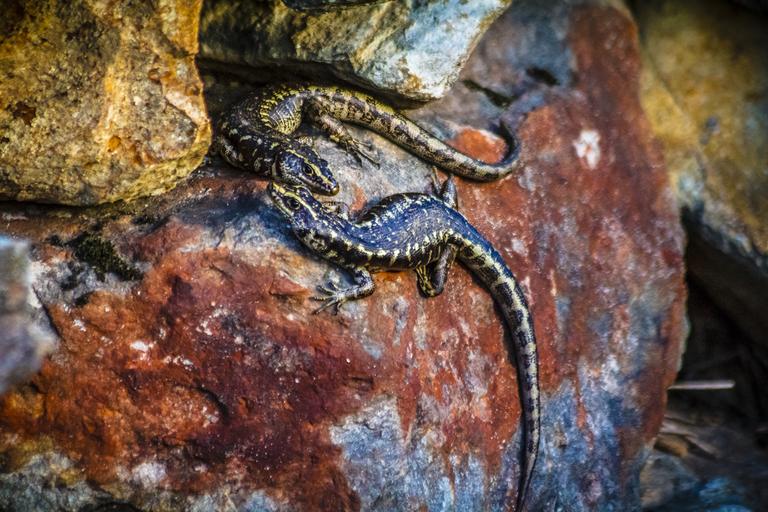MAKE A MEME
View Large Image

| View Original: | Otgao_Skinks.jpg (5184x3456) | |||
| Download: | Original | Medium | Small | Thumb |
| Courtesy of: | www.flickr.com | More Like This | ||
| Keywords: texture outdoor Grand and Otago skinks are two of New Zealand's most distinctive and impressive lizards. Known as giant skinks, they are our largest lizards, with Otago skinks growing up to 300 mm in length and grand skinks 230 mm. Unlike many lizards overseas, both species are omnivorous, diurnal, and don't hibernate. They can live for up to 20 years in the wild, and like all lizards in this country, give birth to live young - two or three a year. Both species are distinctively marked, which is why southern Māori know them as mokomoko. Grand skinks are black with yellowish flecks, and Otago skinks, black with grey, green, or yellowish blotches. These cryptic colour patterns provide great camouflage, amid the lichen-covered schist rocks they inhabit. www.doc.govt.nz/nature/native-animals/reptiles-and-frogs/... en.wikipedia.org/wiki/Skink Grand and Otago skinks are two of New Zealand's most distinctive and impressive lizards. Known as giant skinks, they are our largest lizards, with Otago skinks growing up to 300 mm in length and grand skinks 230 mm. Unlike many lizards overseas, both species are omnivorous, diurnal, and don't hibernate. They can live for up to 20 years in the wild, and like all lizards in this country, give birth to live young - two or three a year. Both species are distinctively marked, which is why southern Māori know them as mokomoko. Grand skinks are black with yellowish flecks, and Otago skinks, black with grey, green, or yellowish blotches. These cryptic colour patterns provide great camouflage, amid the lichen-covered schist rocks they inhabit. www.doc.govt.nz/nature/native-animals/reptiles-and-frogs/... en.wikipedia.org/wiki/Skink | ||||